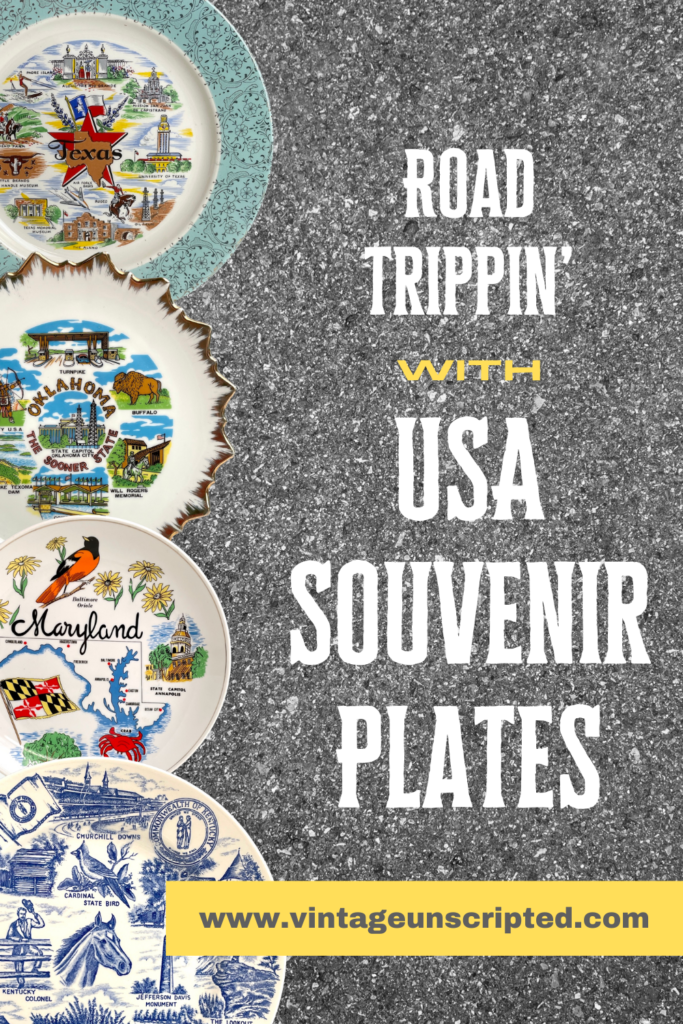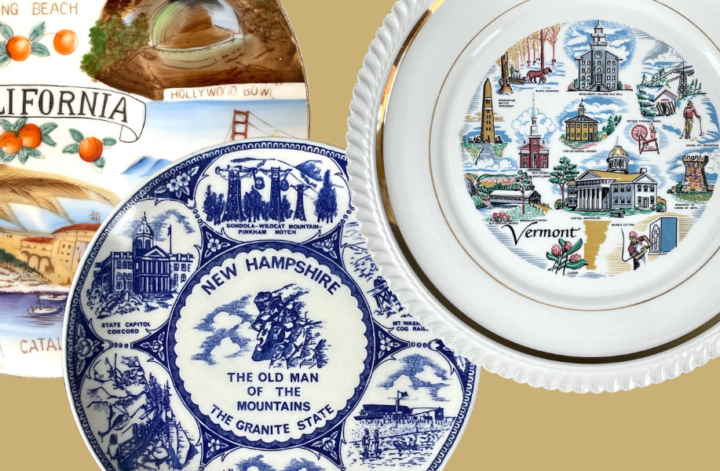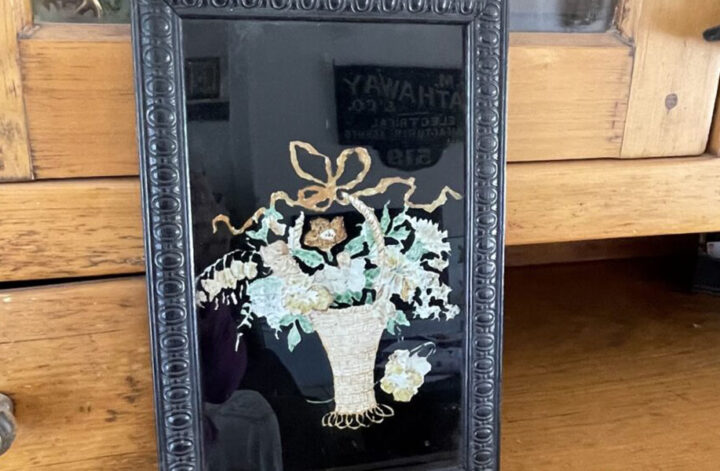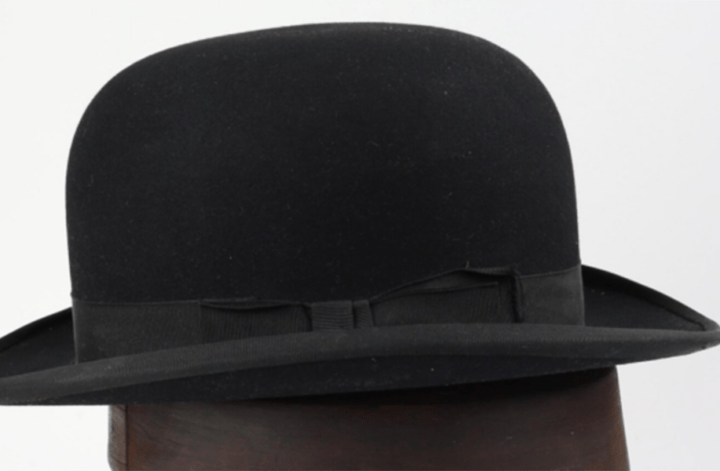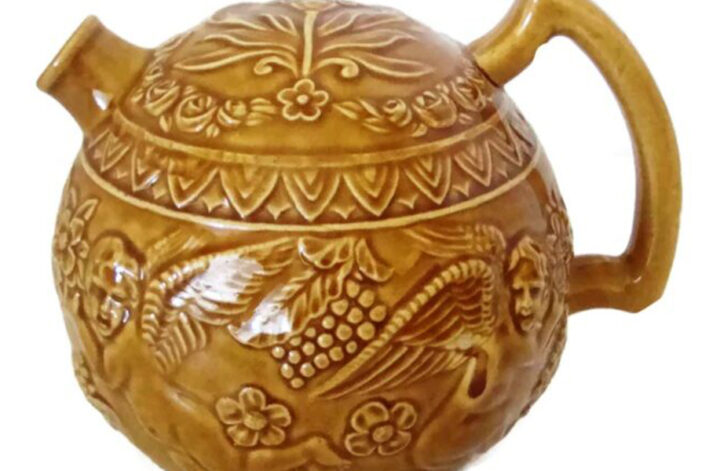Never discount the power of a lightbulb moment. Once upon a time, people looked at the hairy animal with teeth and a tail that hovered near their fire and thought, “I should tame that wild thing” and now dogs sleep on the pillow beside their humans. And once upon a time someone looked at an attractive plate on their table and thought “Damn that’s pretty, I should hang it on the wall.” And so it was that plates became decor. And sometime after that, souvenirs makers thought, “People are hanging plates on their walls, I bet they would buy souvenir plates.” And they were right.
The scope of souvenir travel plates is long and wide. There are many lovely antique examples on the market. Antique view china is super charming because pieces can be microlocal in location, showing specific historic sites or businesses or main streets of small towns. Antique plates for states are less common. Antique travel spoons from states—that’s another story. And a different post. So, moving on…
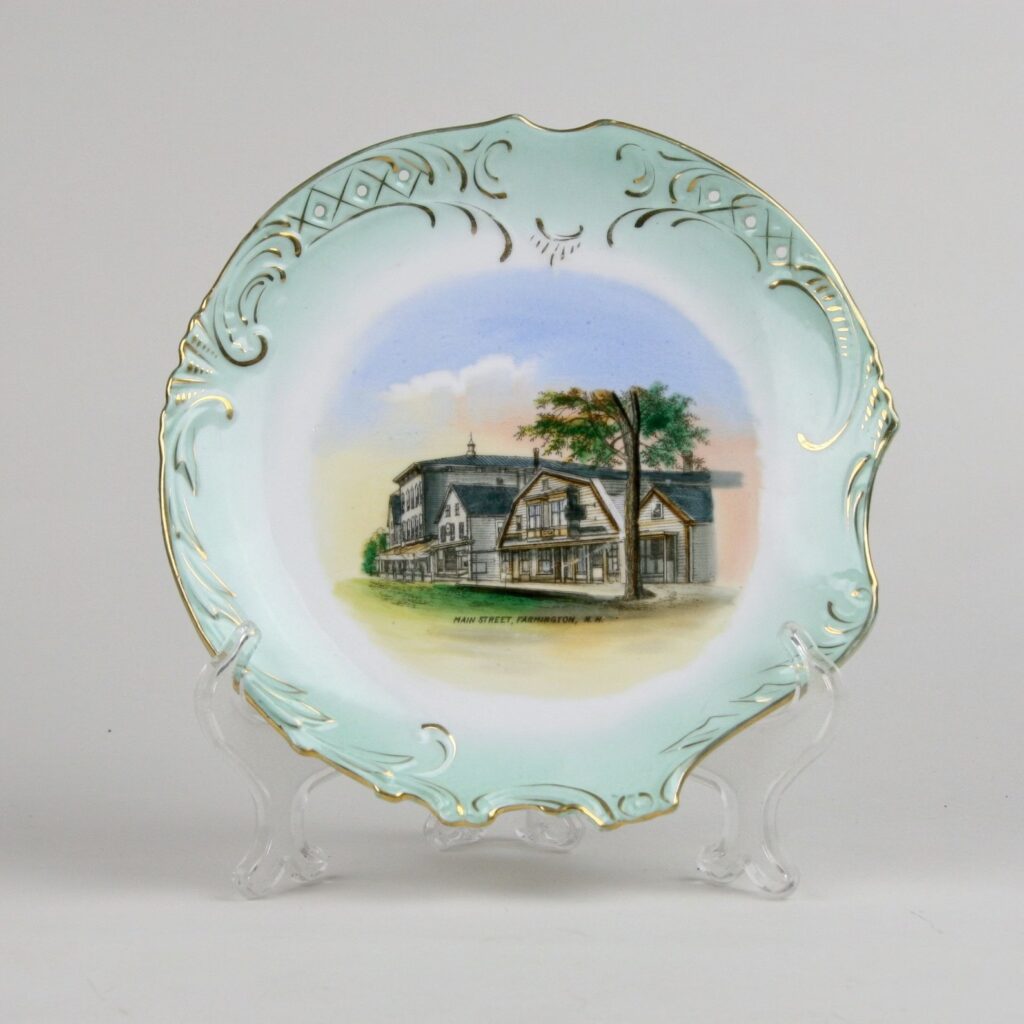
Here in the US, the invention and widespread use of the automobile, the beginning of road tripping and eventually the building of the interstate highway system in the 1950s brought on the golden age of the USA souvenir state plate.
I am not a souvenir plate scientist. But I have a lot of experience with them. One of my favorite sports is thrifting souvenir state plates, so in a corollary derived from Malcolm Gladwell’s cited 10,000 hours of practice to achieve mastery, my years of petting plates and calling them my preciousssssesssss has given me a certain amount of knowledge. What follows are my observations. And my plates. All are available in my online store.
Types of Souvenir State Plates
Road tripping souvenir state plates date back to before the 1950s. Plates from the 30s and 40s are often made with decals in the soft colors of linen postcards from the same era. One of the tells that gives away the age of these plates are the small creases where the decal folded when it was being added. In the wild, the find ratio is one plate from this era for every 20 mid century plates.
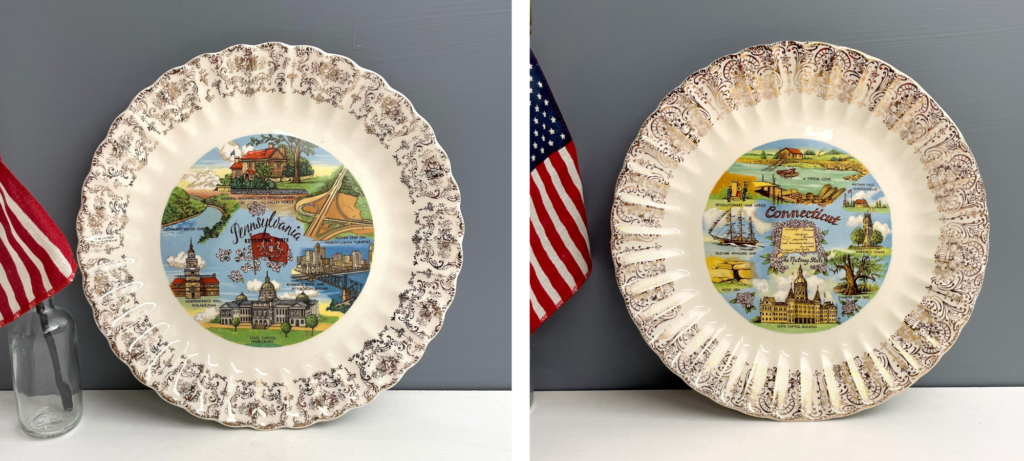
Once you get into the 1950s through the 1960s, souvenir plates were rising in popularity and were made in more ways.
Decals were still a primary method. China makers produced “blanks,” plates with no center design, that other companies added decals. Many of these plates had gold filigree or floral borders around the outside to add a touch of elegance. If the surface of the plate is smooth to the touch and if you can see a faint clear ring around the center image if you tip the plate the right way in the right light, it’s probably a decal.
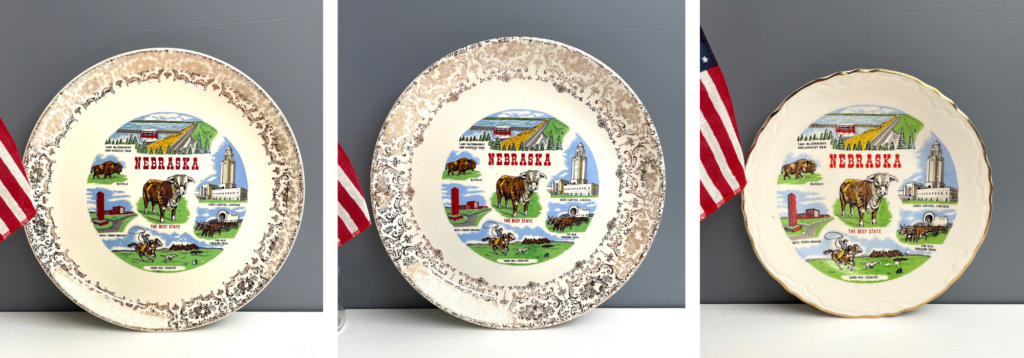
Plates were also stamped or printed. If you run a fingernail gently over the image on a stamped or printed plate, you will be able to feel the edge of the paint, which is microscopically raised.
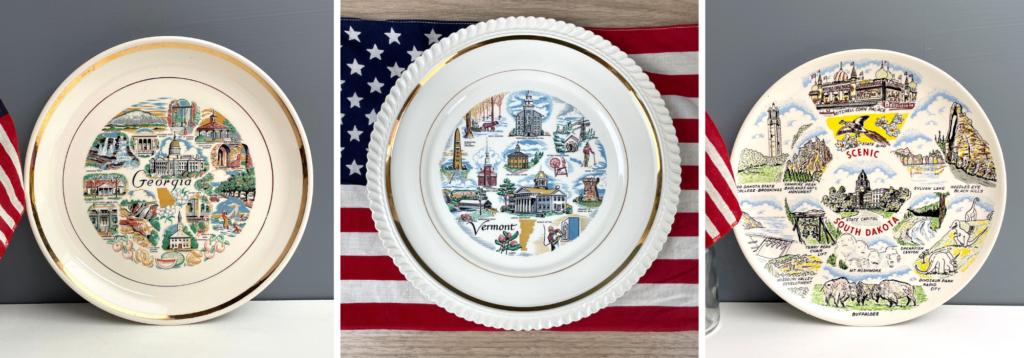
Plates stamped or printed with basic outlines of images and text that have hand painted swashes of color to bring them to life are a treat. Most of these plates are imported from Japan or Korea. Go gently when cleaning these as there is no protective coat over the paint and it can be damaged with aggressive cleaning. I’ve found that Clorox wipes (no other brands need apply) are both gentle enough not to damage the finish and strong enough to get off the grease that accumulates over decades of hanging on the wall.
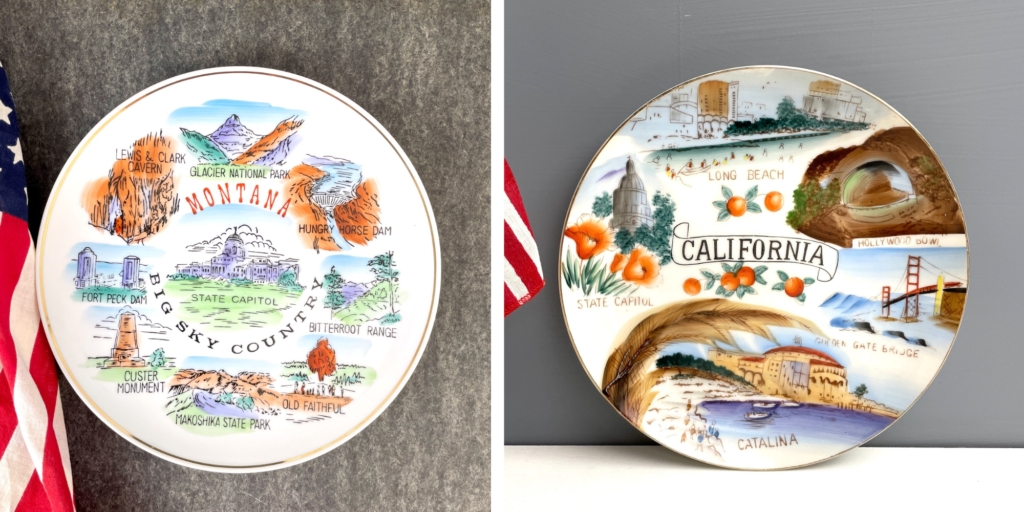
Transfer ware was also popular. These plates have a special elegance to them, being one color with more detailed designs. Some transfer ware plates have hand painted colors to accent the designs. Vernon Kilns made some beautiful transfer ware plates from the 1930s – 1950s that are unusual in that the state name is not prominent in the design.
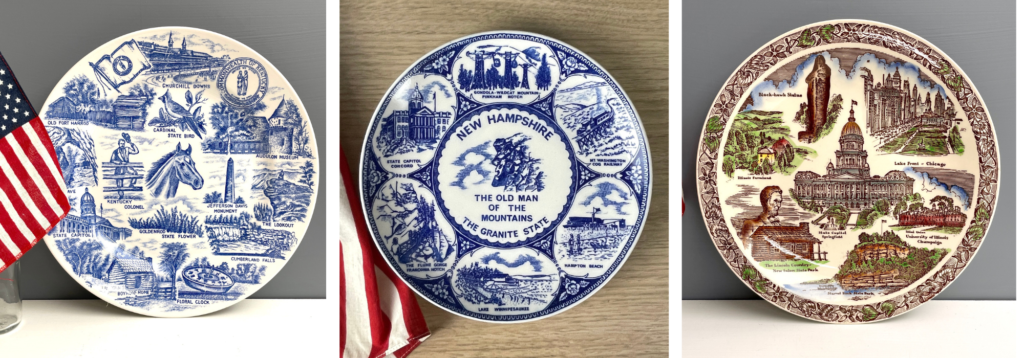
Plates from the 1970s – 1990s are a generally less detailed than plates from the 50s-60s, which might highlight many iconic images from a state. The later plates are more likely to be smaller with decorative edges and fewer but bolder images.
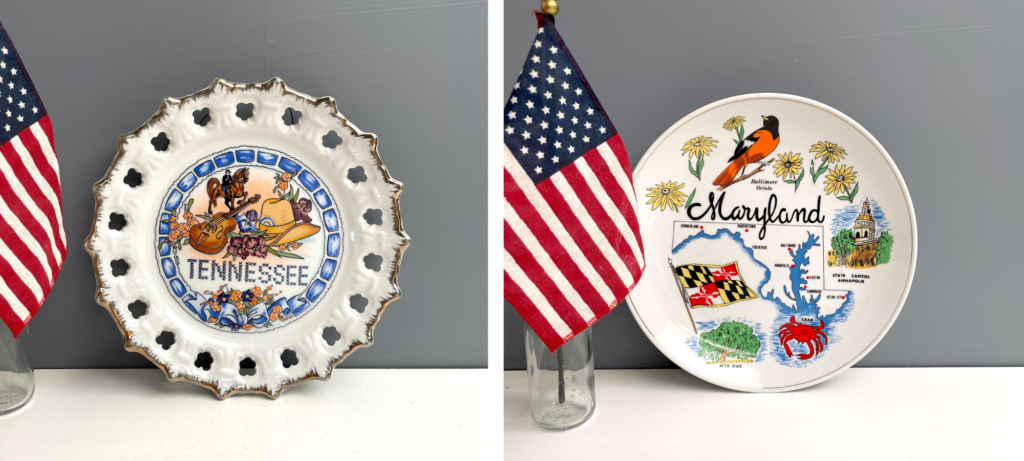
Identifying a plate’s maker
This is harder than you might imagine. Companies like Wedgwood and Vernon Kilns that actually produced the plates with their designs put their marks on the back. Homer Laughlin made souvenir plates from the 1950s-1970s, but I have rarely found their backstamp. Imported plates might have a stamp or a sticker with country of origin and occasionally the company’s name. Plates made for specific businesses to sell will have the name of that business and maybe the maker on the back. But the vast majority of souvenir plates are unmarked, making it impossible to find out who actually made it.
There isn’t a lot of information out there on who made souvenir plates. I’ve dug many a rabbit hole looking for details and come up with not a single insight. This was confirmed by the International Museum of Dinnerware Design, who say on its website that “manufacturing records regarding specialty issues such as state plates are scarce or lacking entirely.”
Variations in quality
Souvenir state plates are purely decorative, and like most decorative things, the production quality varies to match the original price point. Higher end pieces, usually made by a well-known china company, match the quality of good dinnerware. At the lower end, you will find things like small skips in the printed image and bubbles in the clear coat glaze as well as crazing. These are only flaws if you decide they are.
Where to find souvenir plates
Souvenir plates can be found in the wild at thrifts, yard sales and flea markets. Where you are shopping partially determines what plates you will find. Here in Massachusetts, the most common plates are Florida, New Hampshire and Las Vegas. Since those are all vacation destinations, that makes sense. It is rare to find a Connecticut or Rhode Island, they are lovely places to vacation, but they’re more neighbors than destinations, and even rarer to find a Massachusetts. If you’re shopping in the midwest, you would be more likely to find those than you are here.
For me, finding a Louisiana (not New Orleans), Arkansas or one of the Dakotas is like hitting the lottery. There are some states I have never found including Idaho and Michigan, at least I don’t remember finding them. They might be in one of my “to list” plates of crates. The thrill of the find often outpaces this vintage seller’s listing speed. The struggle is all too real.
Occasionally at a thrift, you will find a lifelong collection of plates donated as a person downsizes or an estate is dispersed. It takes the strength of Hercules not to load every single one in your cart. Regrettably, I have the strength and willpower of Winnie the Pooh when it comes to souvenir plates, hence the crates of plates waiting to be listed.
If you’re after a specific plate, and as a seller I hope you are, online is the way to go. Here’s a tip: Always check the dimensions before you purchase. Sizes can range from 3″ – 12″. There’s a wide range of prices to, from $10-50, depending on design.
Deciding what to collect
You and you alone can decide what state souvenir plates you need. You might collect plates in a variety of styles and ages from your home state. If you’ve moved around, you might collect plates from places you’ve lived. I have a bare living room wall and a repressed desire to mount state plates in roughly the same position they appear on the map. There are obviously technical layout issues to resolve with this, since the plate from diminutive Rhode Island could be the same size as a plate from Texas. This would involve math and templates, which is why it remains a repressed desire.
People have purchased pairs of plates as wedding gifts, which is an ingenious idea for a vintage loving couple.
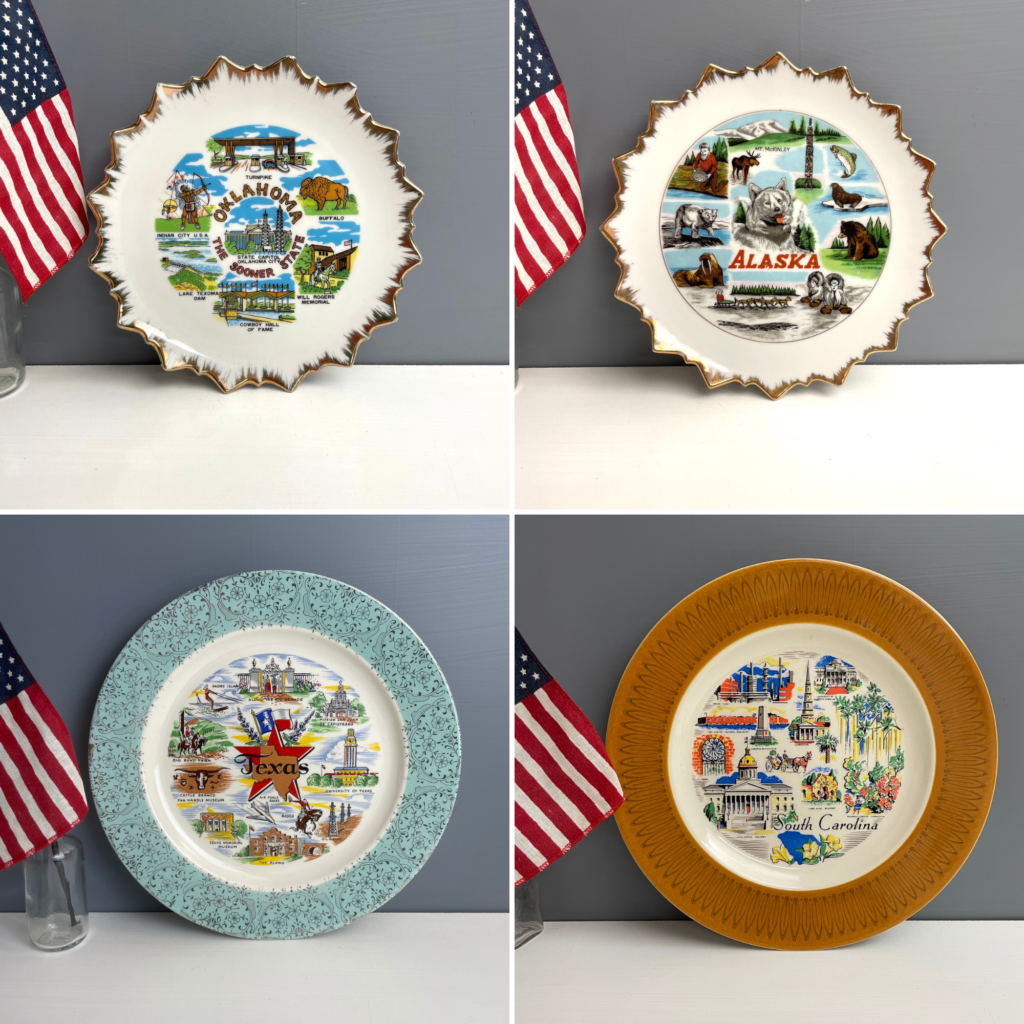
If you want to play the long game, you might decide to collect plates that all have the same design style. There are a few styles that can be found. This will take you longer, but imagine how satisfying it will be when you achieve your goal.
